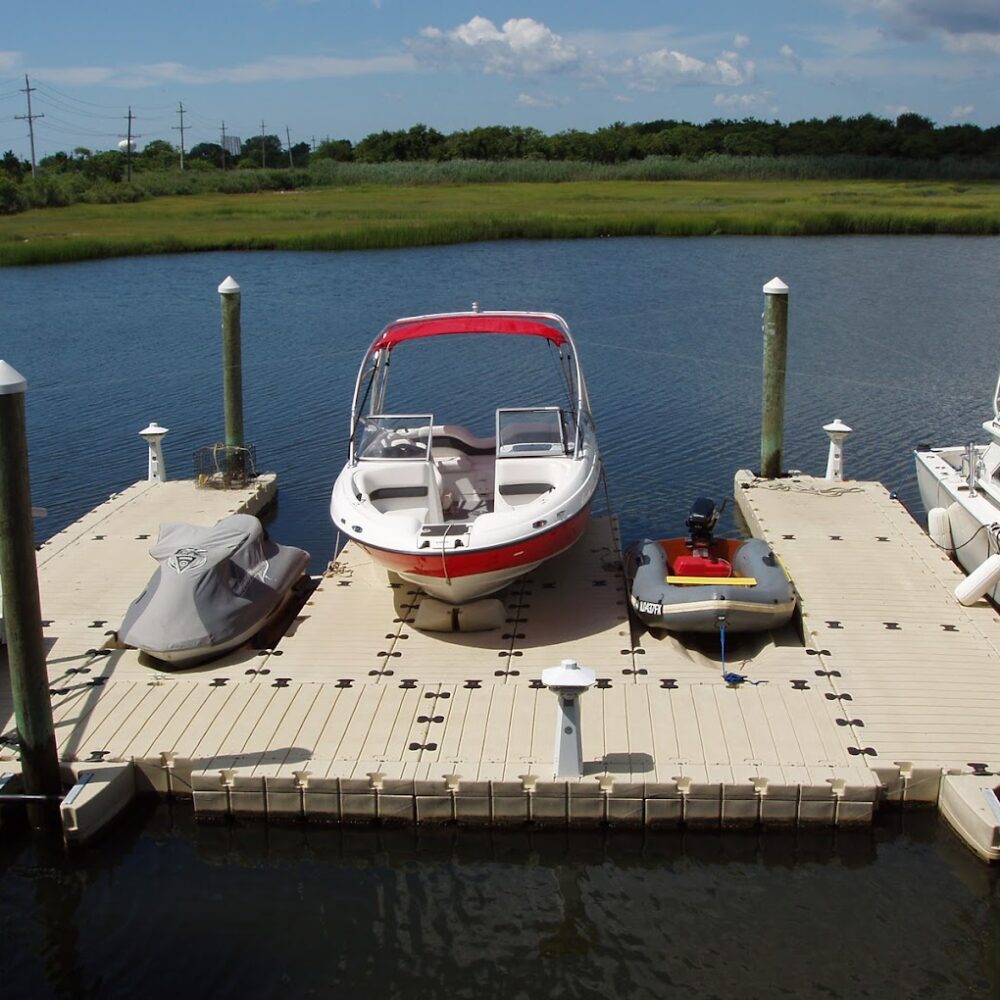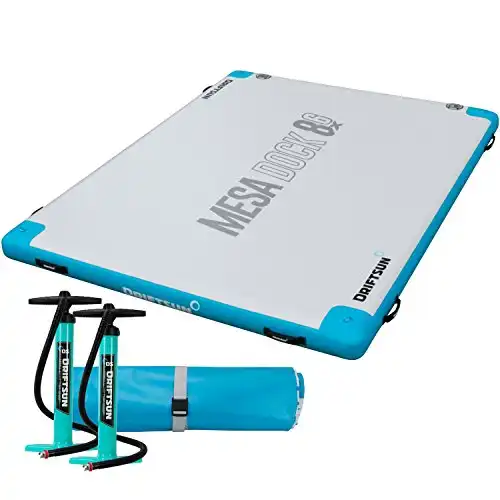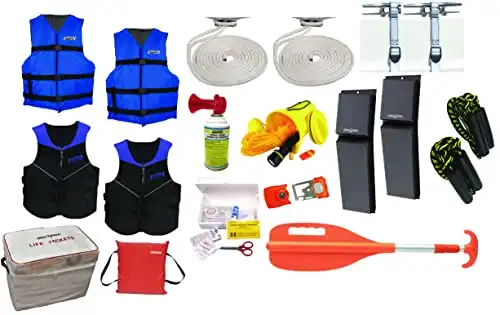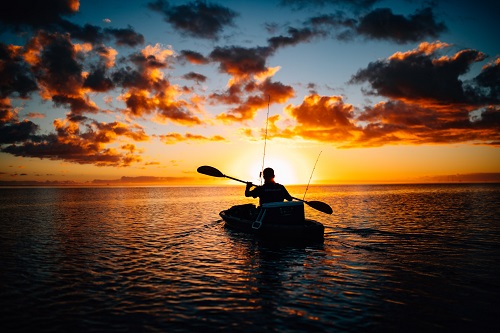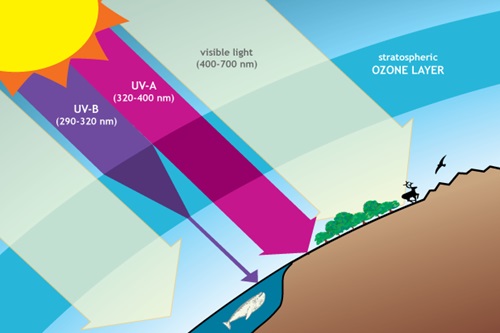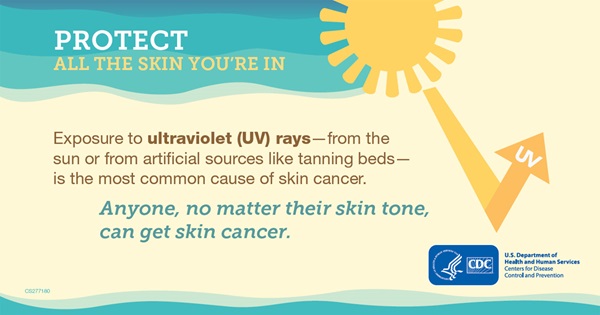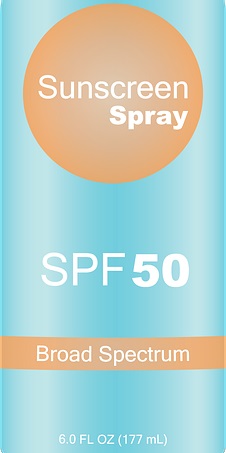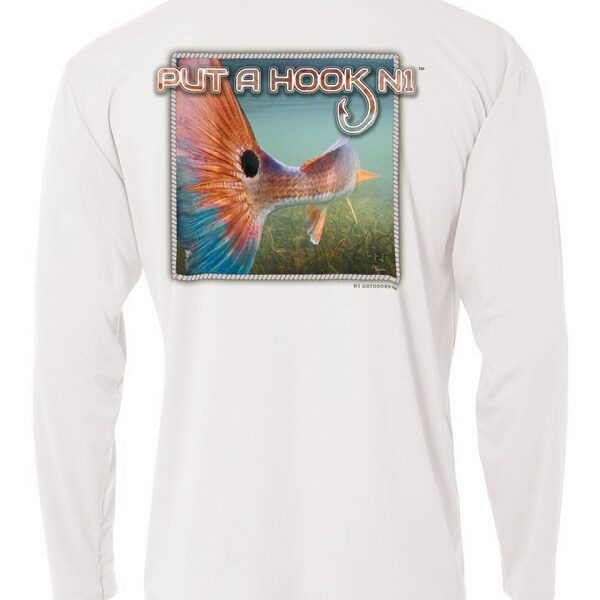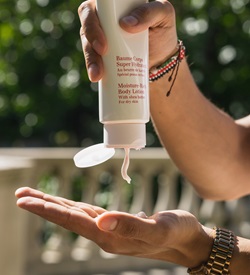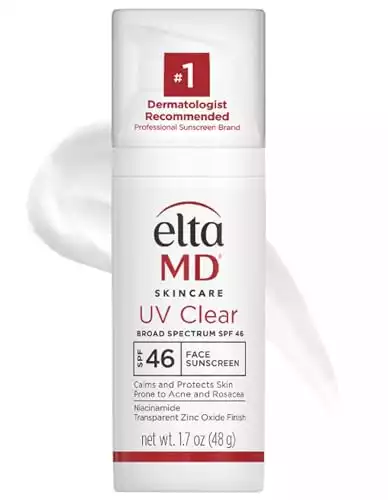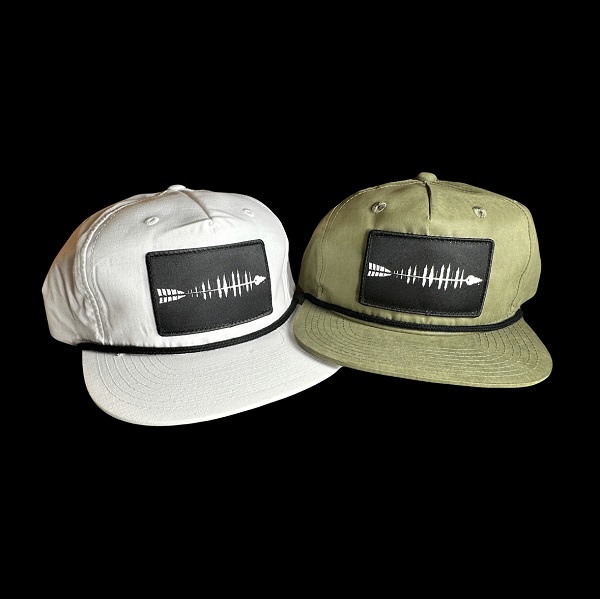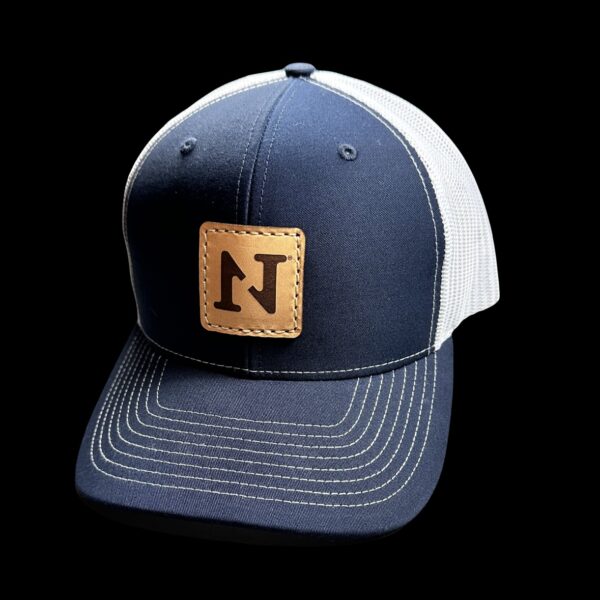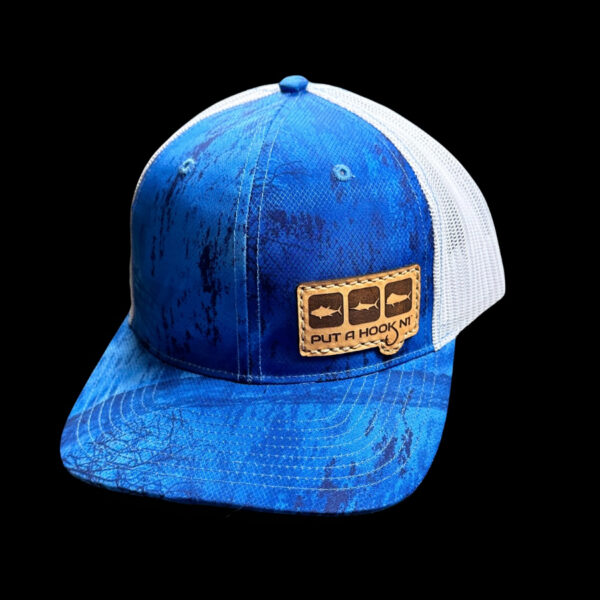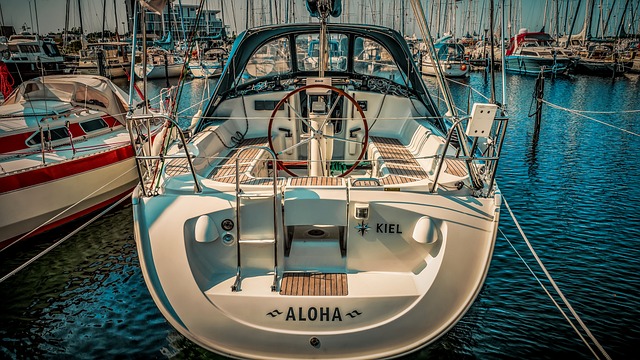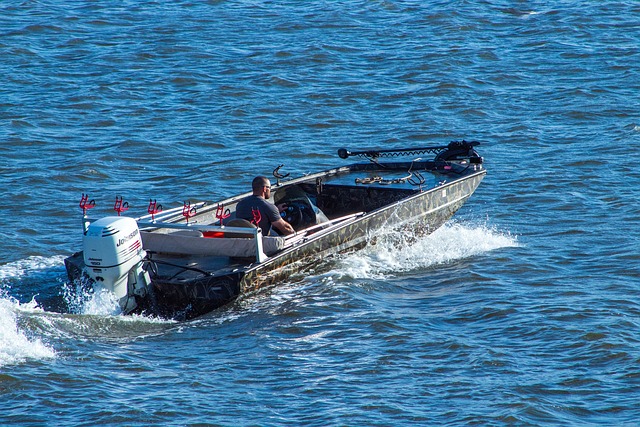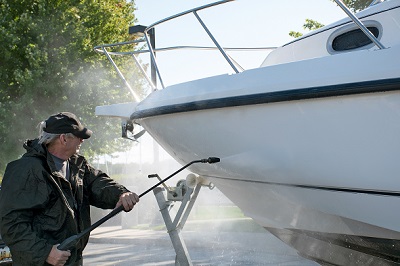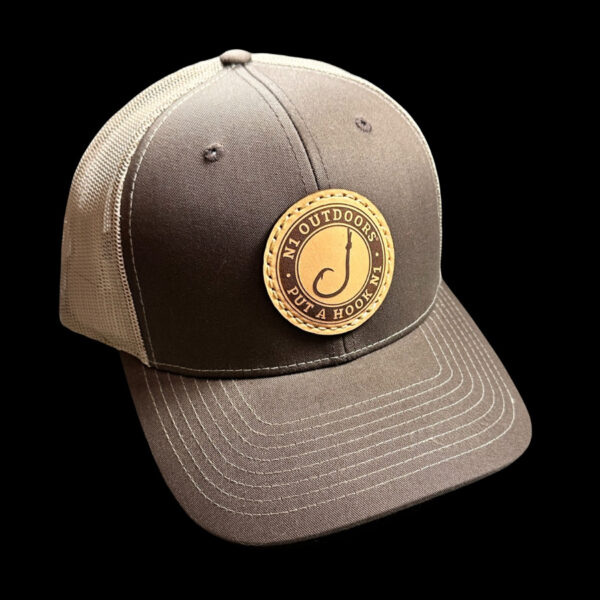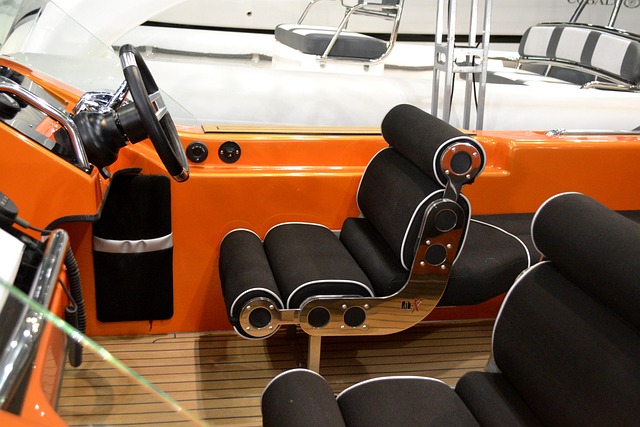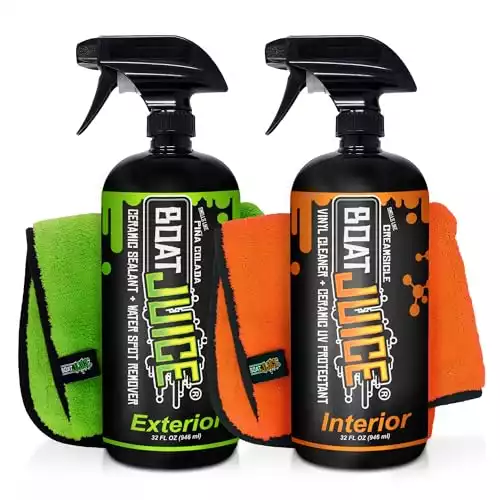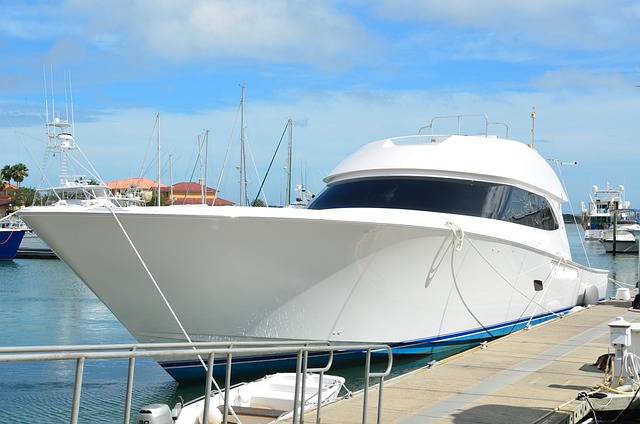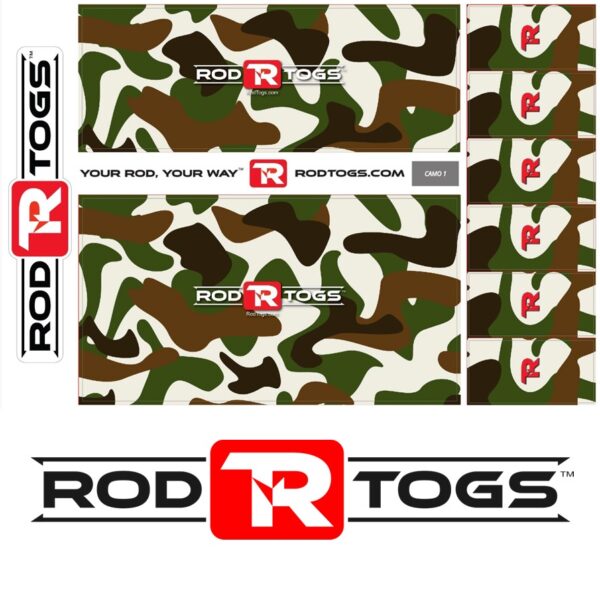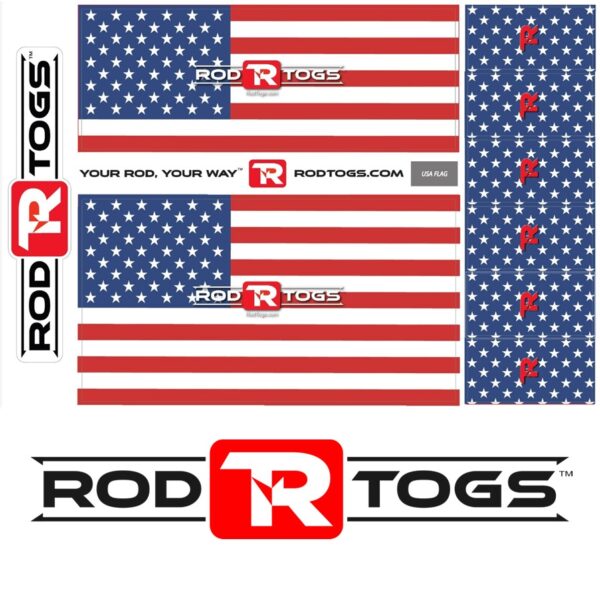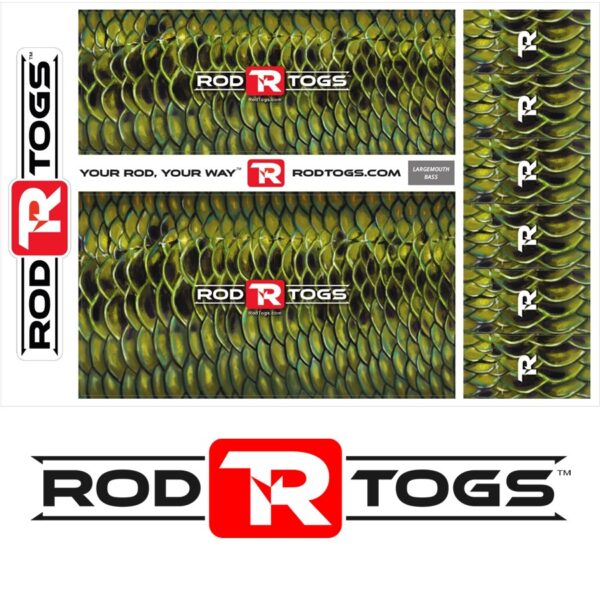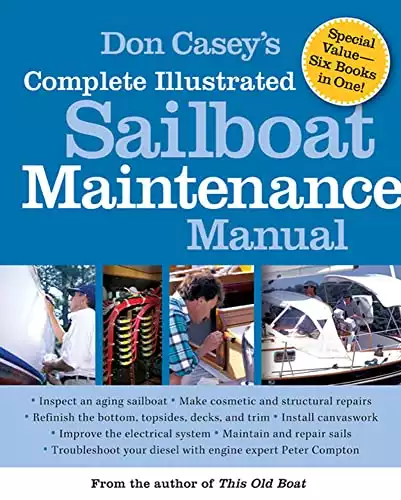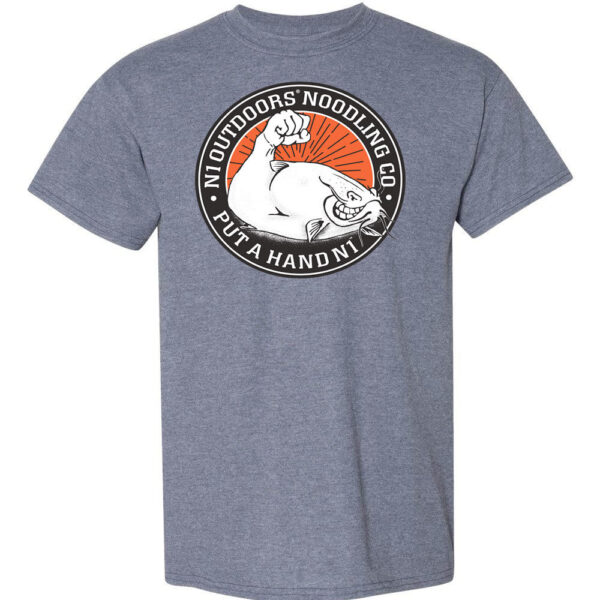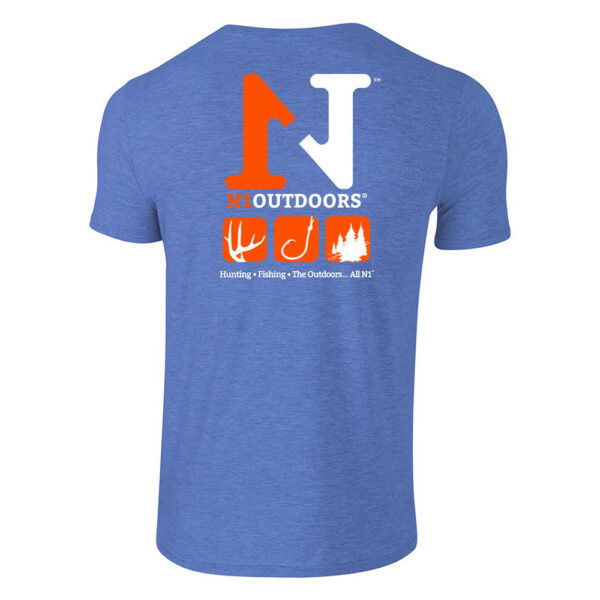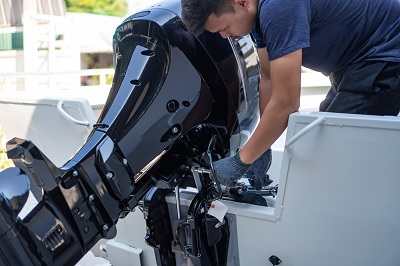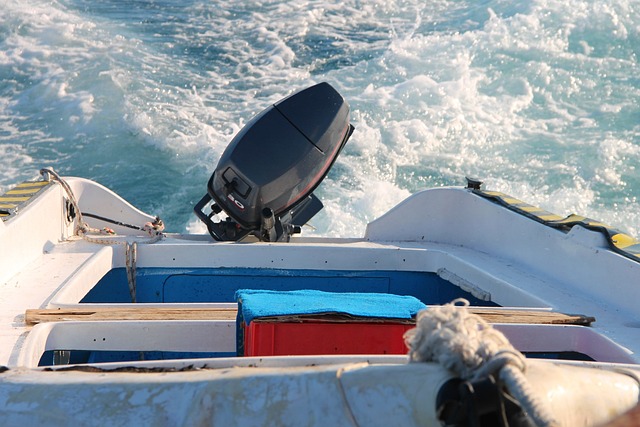Boating on any body of water is a gateway to a spectacular outdoor experience.
And, whether your love fishing, or just enjoy breathing the fresh air, it helps to have a dock to secure your boat, to make it easier for your friends, family and loved ones to climb aboard.
Floating docks also give you the flexibility to start your journey in different locations. So, let’s take a look at the numerous options you have for floating docks and premier outlets where you can make your purchase.
What Is a Floating Dock?
You might be wondering, what’s a floating dock anyway?
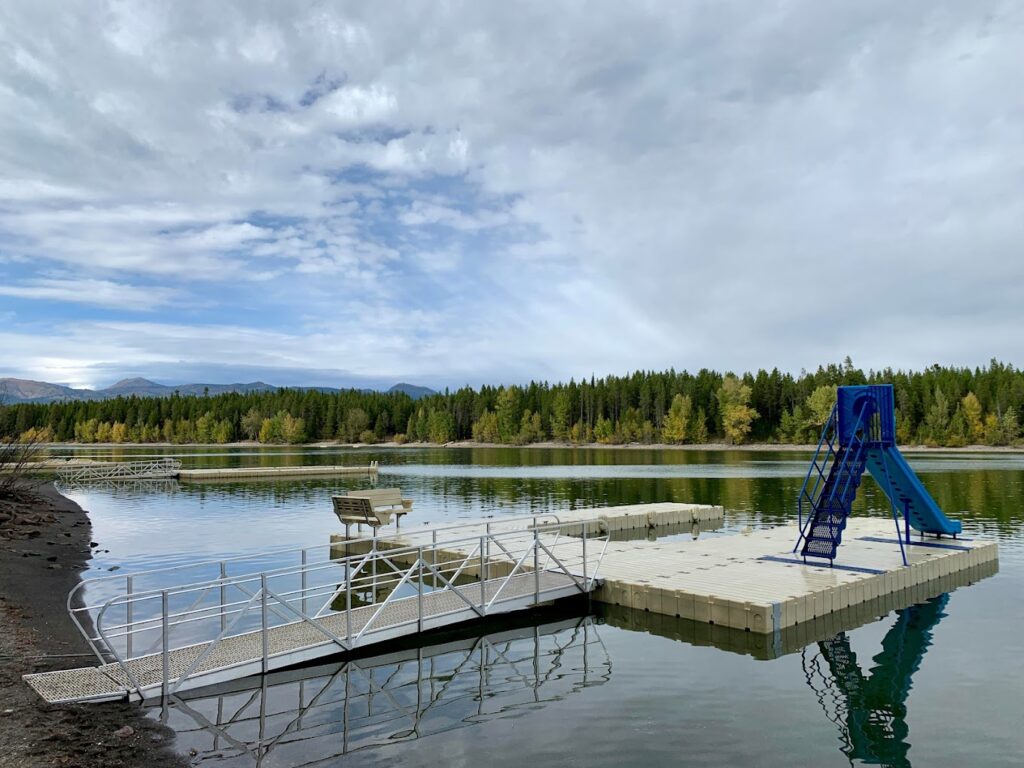
Floating docks can be positioned alongside stationary docks to serve as extensions or placed on the water independently.
A floating dock is a movable (and floating) platform on which you can safely board a boat or personal watercraft.
Many floating docks are barefoot-friendly and allow you to piece together sections, similar to a puzzle, to accommodate the number of people in your party.
Advantages of Owning a Floating Dock
There are multiple types of floating docks on the market to accommodate boats and watercraft. The main differences between products relate to their sizes and materials. However, you can expect most floating docks to provide the following advantages:
- Adaptable: You can find floating docks that adapt to changing water levels. This is perfect for lakes and reservoirs in which water levels rise and lower due to weather.
- Removable: Change your setup between adventures to board in new locations.
- Configuration options: Join more than one floating dock together for a larger platform.
- Ease of use: Adjusting the size of a floating dock allows you to easily set out on your boat, jet ski, kayak or canoe without trouble.
- Weather-ready: Floating docks adapt to inclement weather without submerging.
-
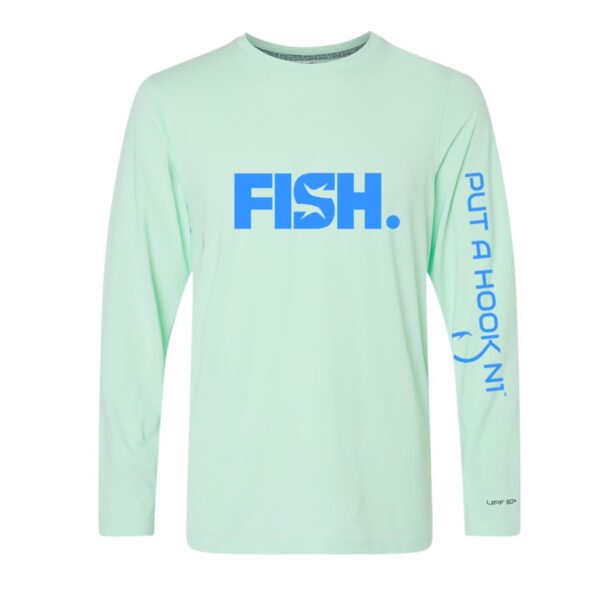
N1 Outdoors® FISH. Performance UPF 50+ Shirt
$37.99 – $39.99 Select options This product has multiple variants. The options may be chosen on the product page -
Sale!
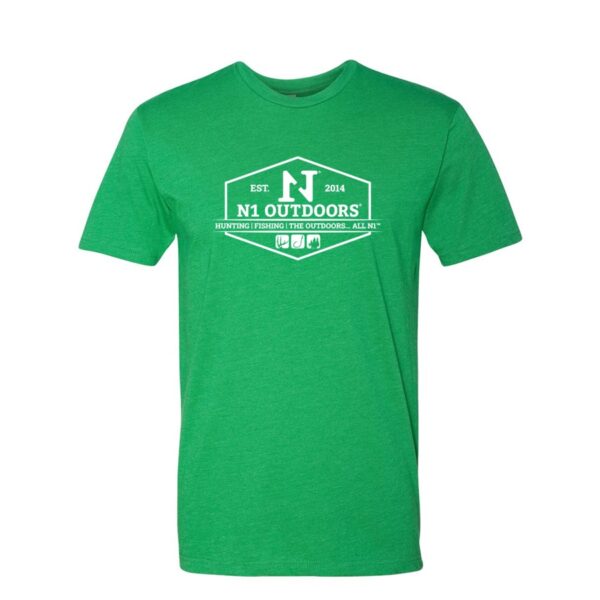
N1 Outdoors® Est. 2014 Triblock Tee
$9.00 Select options This product has multiple variants. The options may be chosen on the product page -
Sale!
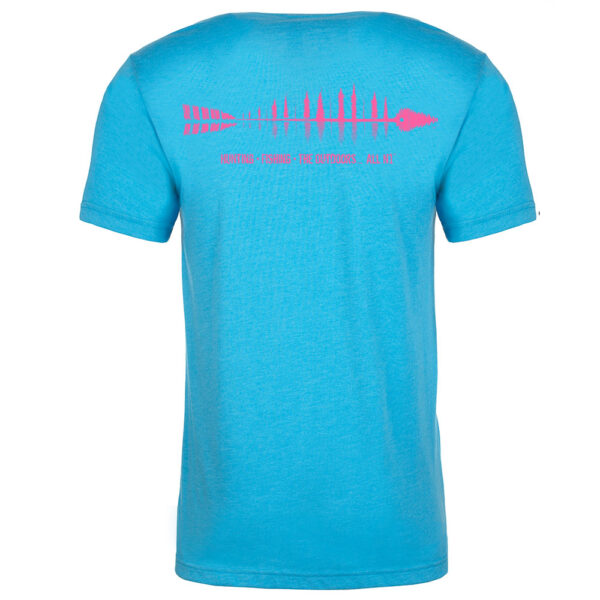
N1 Outdoors® Trifecta Fish Arrow Tee (Turquoise / Neon Pink)
$5.00 Select options This product has multiple variants. The options may be chosen on the product page
Top Types Of Floating Docks
Picking the right floating dock for your setup requires looking at the materials used to make them. Any dock from a reputable brand should serve you well, but you might be more inclined to choose one over another due to its characteristics.
1. Polyethylene
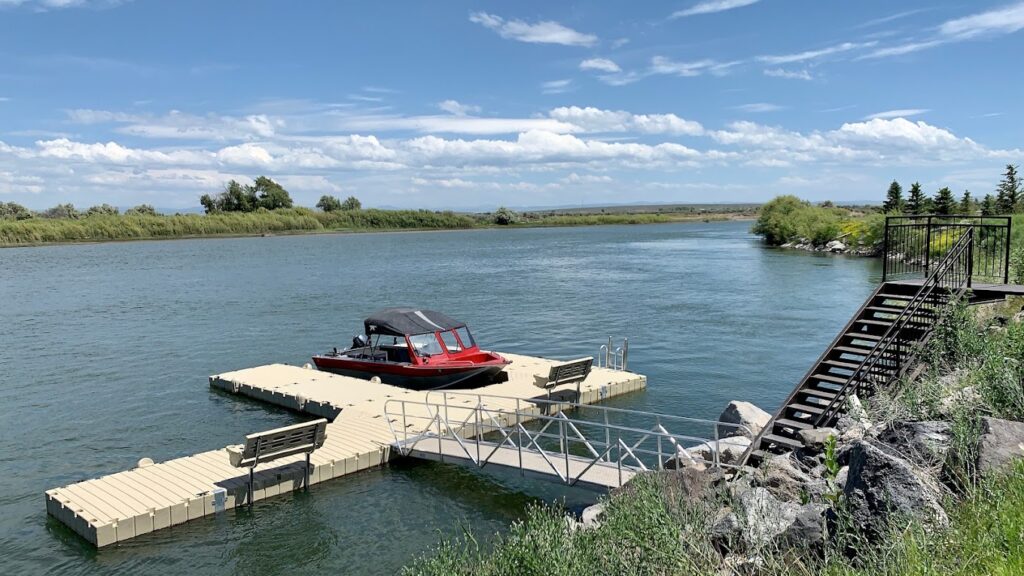
Looking for a floating dock that can withstand the elements, whether that be extreme heat or cold temperatures? High-density polyethylene floating docks are resistant to moisture, which means you can reduce the chances of slipping on flat surfaces when the dock is set up.
Polyethylene floating docks are popular options for enthusiasts like you. The surfaces last for long periods of time with zero chance of rusting or rotting due to the lack of metal or wood in the designs. These docks are also affordable to fabricate, leading to a surplus of shapes available.
2. Aluminum
Aluminum is a lightweight metal that stands strong against surface damage — imperfections like scratches and dents are of minimal concern. Similar to polyethylene floating docks, aluminum varieties are incapable of rusting.
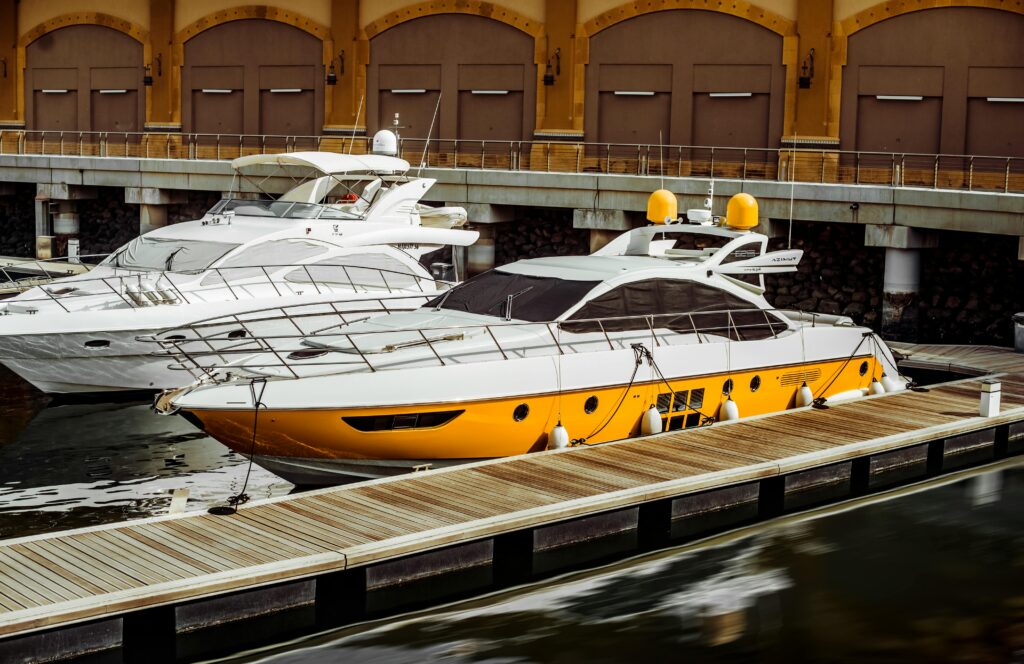
An aluminum floating dock offers a sharp appearance and exceptional durability. You might consider one of these floating dock varieties when you are a fan of permanent dock aesthetics but you want the flexibility of moving your installation as needed.
3. Inflatable
Inflatable floating docks are versatile for small watercraft. As the name implies, these floating docks fill with air to stay above the water and you can fix them to permanent docks or other structures with rope.
Most inflatable floating docks are manufactured with polyester threads and PVC. These products are less durable than their polyethylene and aluminum counterparts, but the high-pressure inflation process gives them a solid feel all around.
The Best Places to Get Floating Docks
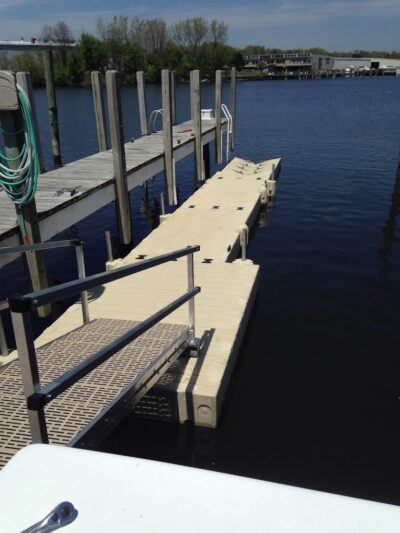
There are multiple outlets where you can purchase floating docks. So, it’s important to do your research and go with a supplier that offers products in the configurations you like with the features you want to see.
Here are some of the best floating dock suppliers for lakes…
1. EZ Dock
EZ Dock has been a pioneer in the floating dock industry since 1991 with fully customizable options for residential, commercial, government and industrial customers.
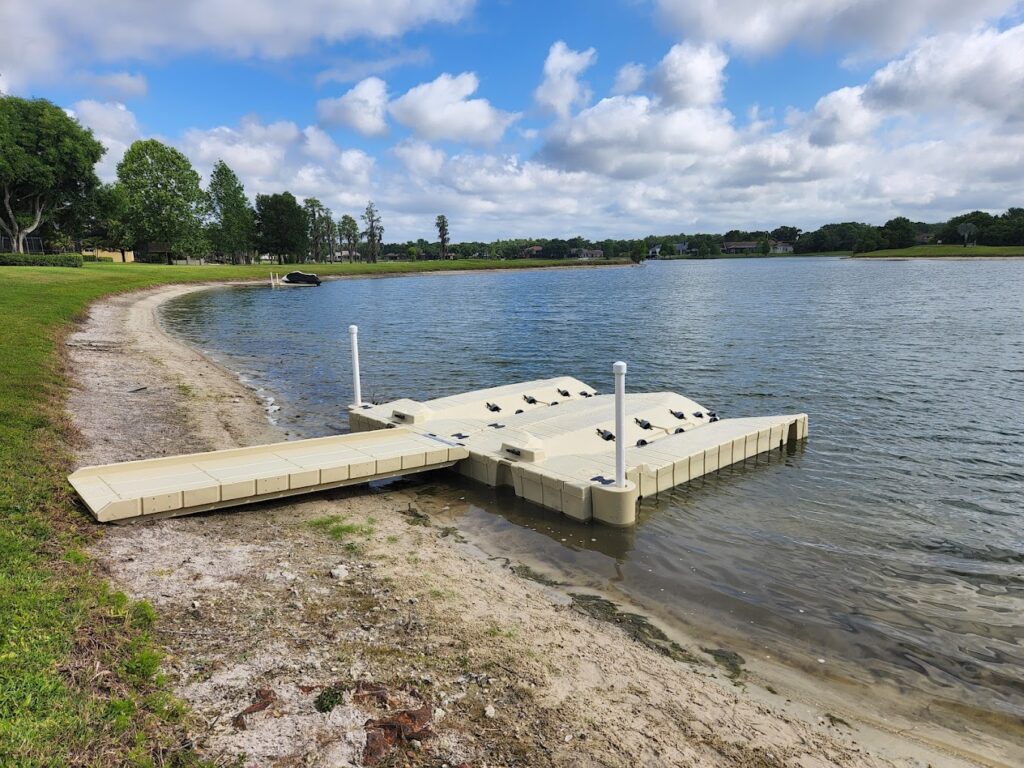
Created by a team that was tired of finishing repairs on traditional docks, EZ Dock was born from the idea that there should be an easier way to enjoy lakes with floating docks that handle almost anything you throw at them. From harsh rain to snowy conditions, you are set up for success.
EZ Dock manufactures polyethylene docks that are slip-resistant and feature impressive weight capacities.
Products from this manufacturer are some of the best docks for lakes that freeze, as recycled rubber couplings are used to add strength and flexibility under changing conditions. Your floating dock stays intact while being straightforward to disassemble, should you need to.
2. AccuDock
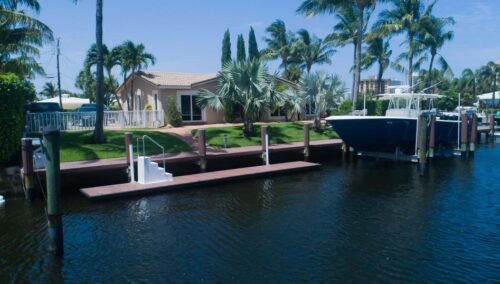
AccuDock products are some of the best for leisure swimming and water sports, leaving room for outdoor seating, life jackets and other gear. (photo credit: Accudock.com)
AccuDock is well-known in the industry for manufacturing floating docks for rowing competitors. This company allows you to customize aluminum docks in virtually any size or shape, and its staff assists with permitting consultations and installations, too.
Whether you need an ADA-compliant dock or want to create a floating dock to precise specifications, this brand, based in Pompano Beach, Florida, stays current on the latest trends to create stellar products.
3. Bellingham Marine
Bellingham Marine prides itself on providing infinite solutions for waterways. One advantage of this manufacturer is that you can find concrete, wood and aluminum floating docks.
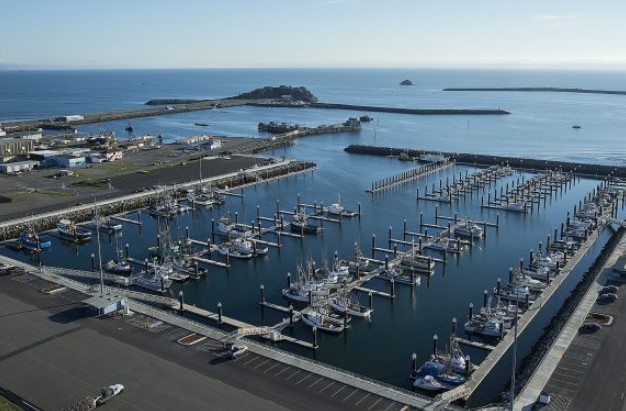
Bellingham Marine lives by the phrase, “One-Dock-Fits-All Is a Myth,” and focuses on innovation. Bellingham Marine offers floating docks with reinforced wooden frames that can potentially last for decades.
Final Thoughts On Best Types Of Floating Docks
A floating dock is the key to unlocking the full potential of a lake, pond, or spring. Whether you need a docking solution for work or leisure activities, the types of floating docks and the top makers mentioned in the lists above will help you make a logical decision for your boating adventures.
So, explore the waters and make new memories with friends and family like never before once you settle on a polyethylene, aluminum or inflatable floating dock that exceeds your expectations!
Happy and safe boating!

